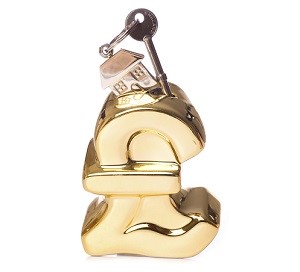How can I save my rental deposit?
 As a young professional, moving into your first rented property is an exciting time; exploring your new local area, buying a variety of brightly coloured decorative items for your various rooms and ‘investing’ in homely goods (slow cookers, smoothie makers etc.). You’ve made it! You have your own home!
As a young professional, moving into your first rented property is an exciting time; exploring your new local area, buying a variety of brightly coloured decorative items for your various rooms and ‘investing’ in homely goods (slow cookers, smoothie makers etc.). You’ve made it! You have your own home!
Sadly though, the sting comes at the end of your tenancy, when it comes to getting back your deposit…
Many landlords and letting agents have had problems with tenants in the past so those contracts you signed, without scrutinising, at the start of your tenancy can sometimes come back to bite you at the end. So here’ some things to think about before you jump in, to ensure you glide happily into your next home:
Before you move in
At the start of your tenancy, go around your property with the landlord or letting agent and go through each point on the inventory, with particular attention to damages. Only sign the inventory when you are happy that everything is included. If they claim they will repair something which is broken, as it is not on the inventory, then follow the conversation up with an email so you have a paper trail. It is also worth recording the meter reading.
Take photographs of all rooms before you unpack (to show the condition in which you received the property) and of any particular issues or broken objects on check-in, preferably with a camera which displays the date, to prove when it was taken.
During your tenancy
At any point during your tenancy, if anything is broken or damaged which you cannot repair, such as damp or electrical faults, tell your landlord or letting agent as soon as possible. If you talk to them via phone, follow it up with an email so that, again, you have a paper trail. And, again, take photographs of any damages.
Moving out
On check-out, get out your contract and inventoryand read it thoroughly before you begin. If it states in your contract that you should professionally clean the property, do so and retain the receipt – as if the landlord disputes the standard then you have evidence. Adhere to any other conditions, such as defrosting the kitchen’s white goods, if it is in your contract.
You should leave the property in the same condition as you moved in, but your contract will state, and it is legally projected, that ‘fair wear and tear’ is completely expected and acceptable. Things which don’t class as ‘wear and tear’ and which you should sort out are, for example, damp around the grouting of sash windows, limescale around the bathroom and general dirt and grime. This should have been maintained by you throughout the tenancy and is therefore not acceptable to leave behind.
Before you leave, and preferably when you have moved out your belongings, take photographs of all of the rooms, as you did when you moved in. Also, take pictures of any problems or damages, which you will have, hopefully, discussed already with the landlord or letting agent. Remove all rubbish and belongings from the property, even if you don’t wish to take them on with you, and check your meter reading again.
It is definitely worth requesting to go over the check-out inventory with the landlord or letting agent. If they allow that, you can look at any issues together and any reductions from your deposit won’t be a surprise.
If, after following this advice, you do have any problems with retrieving your deposit, you can log an issue with the tenancy deposit scheme with which yours is registered, who will give you advice, guidance and, if it comes to it, mediate a fair communication between yourself, the landlord and the letting agent with all of the evidence you have – so the paper trail and photos you have will be handy – to decide what portion you will get back.
Moving house is a busy enough time, so taking a little time before, during and at the end of your tenancy to protect your deposit is well worth it to save you the hassle and bad taste left afterwards.
Don’t get stung! Get back your deposit and enjoy your new home.


